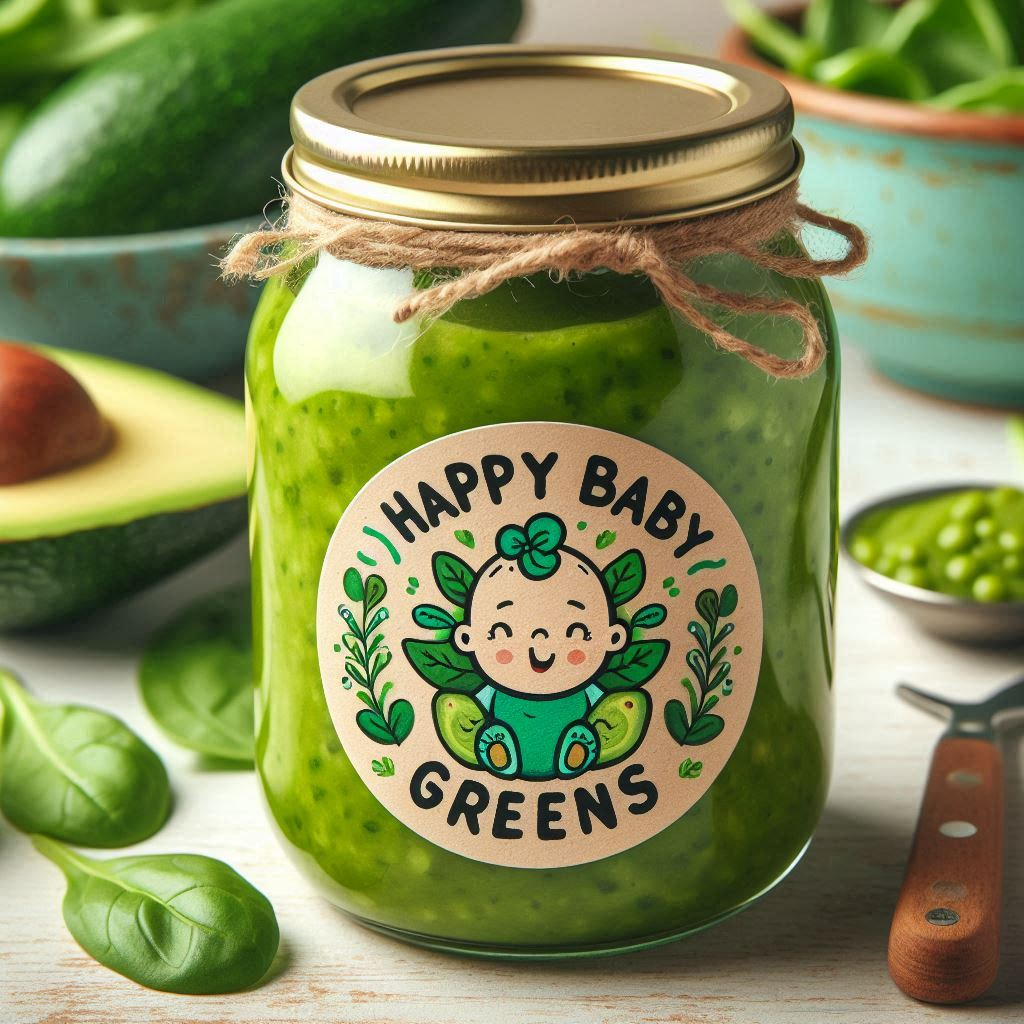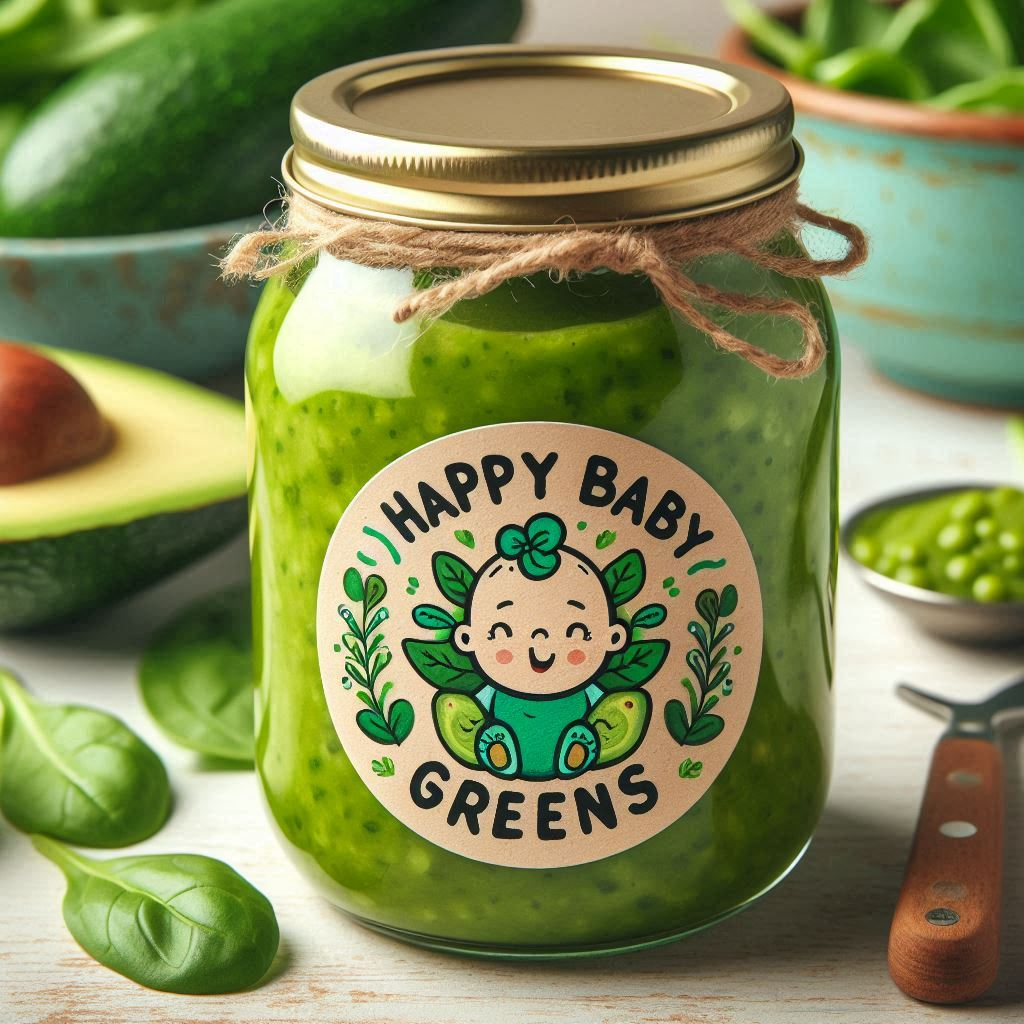Ingredients in Green Baby Food NYT
When it comes to nourishing your little one, understanding the ingredients in green baby food is crucial. As more parents turn to homemade or organic options, green baby foods – packed with nutrient-rich vegetables – are becoming increasingly popular. This comprehensive guide dives into the world of green baby food ingredients, drawing inspiration from trusted sources like the New York Times (NYT) and incorporating personal experiences to help you make informed choices for your baby’s nutrition.
Quick Answer: What are the key ingredients in green baby food?
The main ingredients in green baby food typically include nutrient-dense vegetables such as spinach, peas, green beans, broccoli, and zucchini. These vegetables are rich in vitamins A, C, and K, as well as minerals like iron and calcium, which are essential for your baby’s growth and development.
The Green Revolution in Baby Nutrition

Green vegetables are powerhouses of essential nutrients crucial for your baby’s development. Introducing these foods early can help shape healthier eating habits as your child grows. Let’s explore why green baby food has become a go-to choice for many parents and what makes it so beneficial.
Learn more: Baby Food Jar Crafts
Benefits of Green Baby Food
- Nutrient-dense: Green vegetables pack a punch when it comes to vitamins and minerals.
- Diverse flavors: Introducing various greens helps develop your baby’s palate.
- Fiber-rich: Many green vegetables aid in healthy digestion.
- Low in allergens: Green veggies are often well-tolerated by most babies.
Breaking Down the Ingredients in Green Baby Food (NYT Insights)
Drawing from various sources, including NYT food articles, let’s examine the common ingredients found in green baby food and their nutritional benefits:
| Ingredient | Key Nutrients | Benefits |
|---|---|---|
| Spinach | Iron, Calcium, Folate | Supports bone development and blood health |
| Peas | Vitamin C, Fiber | Boosts immune system and aids digestion |
| Green Beans | Vitamins A, C, K | Promotes eye health and bone strength |
| Broccoli | Vitamin C, Calcium | Strengthens immune system and bones |
| Zucchini | Vitamin A, Potassium | Supports vision and heart health |
Homemade vs. Store-Bought: Navigating Your Options
When it comes to ingredients in green baby food, NYT food writers often discuss the merits of homemade versus store-bought options. Let’s break down the pros and cons of each:
Homemade Green Baby Food
Making your own baby food allows you to control the ingredients and ensure freshness. However, it requires time and careful preparation.
Store-Bought Green Baby Food
Convenient and often fortified with additional nutrients, store-bought options can be a lifesaver for busy parents. However, they may contain additives or preservatives.
“Whether homemade or store-bought, the key is to focus on wholesome, nutrient-rich ingredients that will nourish your baby’s growing body and developing palate.” – NYT Food Column
A Personal Journey with Green Baby Food

As a new parent, I was determined to give my daughter, Lily, the best start in life. Inspired by NYT food articles and baby nutrition blogs, I embarked on a green baby food adventure. Here’s a snippet from my diary:
Day 1: Steamed and pureed organic green beans. Lily’s reaction? A scrunch of her tiny nose followed by cautious acceptance.
Day 7: Introduced pea puree. Success! Lily’s eager gurgles and grabby hands spoke volumes.
Day 14: Brave new world – spinach and apple blend. The verdict? A resounding “Mmm!” (Or was that just gas?)
This journey taught me that introducing ingredients in green baby food is as much about patience as it is about nutrition. Each baby’s palate is unique, and it’s okay to take it slow.
Expert Tips for Preparing Green Baby Food at Home
Drawing inspiration from NYT cooking sections and baby food experts, here are some top tips for preparing nutritious green baby food at home:
- Choose organic: When possible, opt for organic vegetables to minimize exposure to pesticides.
- Steam, don’t boil: Steaming preserves more nutrients than boiling.
- Blend well: Achieve a smooth consistency by blending thoroughly and adding breast milk or formula if needed.
- Freeze in portions: Use ice cube trays to freeze small portions for easy meal prep.
- Rotate ingredients: Vary the ingredients in green baby food to expose your little one to different flavors and nutrients.
Learn more: When Should I Start Tummy Time with My Newborn?
Innovative Green Baby Food Recipes
Get creative with these NYT-inspired green baby food combinations:
- Spinach and Pear Puree
- Broccoli and Sweet Potato Mash
- Zucchini and Apple Blend
- Green Bean and Avocado Smoothie
- Pea and Mint Puree
Remember, when introducing new ingredients in green baby food, always consult with your pediatrician and watch for any signs of allergies.
The Future of Green Baby Food
As we look ahead, the focus on nutritious, green baby food is likely to grow. NYT food trends suggest an increasing interest in plant-based diets, which may influence baby food choices. We might see more innovative ingredients in green baby food, such as kale, chard, or even algae-based supplements, always with a focus on optimal nutrition for growing babies.
Nourishing Your Baby’s Future
Understanding the ingredients in green baby food is a crucial step in providing your little one with a strong nutritional foundation. Whether you’re inspired by NYT food articles, baby nutrition blogs, or your own culinary creativity, remember that each spoonful of green goodness is an investment in your baby’s health and future.
As you embark on this green food journey, stay curious, be patient, and enjoy the messy, giggly, sometimes challenging process of introducing your baby to the wonderful world of green vegetables. After all, today’s green bean puree could be tomorrow’s favorite salad!

Jessica Winter is a passionate parenting blogger with two years of experience guiding new and seasoned parents through the joys and challenges of raising babies. Her insightful posts blend personal anecdotes with expert advice to offer a warm and practical perspective on modern parenting.

